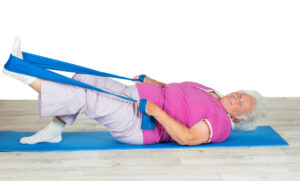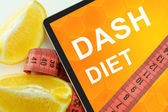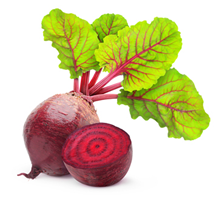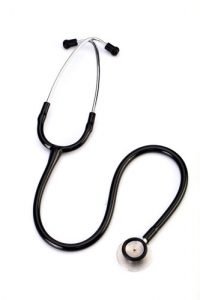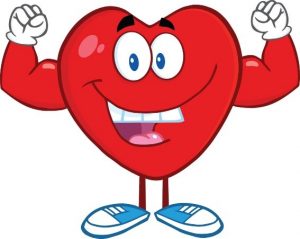Do Phenols And Parabens Raise Blood Pressure?
Author: Dr. Stephen Chaney
 We live in a toxic world. While we are exposed to hundreds of toxic chemicals, most research in recent years has focused on two classes of toxic chemicals – phenols and parabens. They are widely used as antimicrobial agents and preservatives in personal care products, cosmetics, pharmaceuticals, and foods.
We live in a toxic world. While we are exposed to hundreds of toxic chemicals, most research in recent years has focused on two classes of toxic chemicals – phenols and parabens. They are widely used as antimicrobial agents and preservatives in personal care products, cosmetics, pharmaceuticals, and foods.
- Almost 80% of personal care products contain parabens.
- You find them in unexpected places like toothpaste, soap, and skin care products.
- You won’t find them listed on the label of fragrances because fragrance ingredients are considered proprietary.
These chemicals are excreted in the urine, are incompletely removed during wastewater treatment, and end up in our drinking water.
With so many routes of exposure, it is no wonder our bodies have become toxic waste dumps.
- Methyl and propyl parabens have been detected in the urine of 95% of adults and 99% of teenagers in this country.
- Multiple phenols and parabens have been detected in the urine of most US adults.
- Levels are higher in women than men because women use more personal care products.
And that is a concern because phenols and parabens:
- Are endocrine disruptors.
- Are associated with reproductive difficulties and developmental delays, pregnancy complications (hypertension and gestational diabetes), and birth defects.
The best evidence for these effects comes from animal studies. It has been difficult to reproduce these effects in human studies because it has been difficult to identify a large group of subjects with high enough phenol and paraben levels to give statistically significant results.
The study (JR Varshavsky et al, Journal of Environmental Health Perspectives, volume 134, Issue 8, August, 2024) I will discuss today was designed to overcome those difficulties. It determined the effect of maternal phenol and paraben levels on blood pressure and hypertension during pregnancy in a high-risk group of women – women who live in a region of Puerto Rico with 18 Superfund sites that have high concentrations of phenols and parabens in the groundwater.
How Was This Study Done?
 The investigators used data from the PROTECT Center that studies exposure to environmental contamination in drinking water in Puerto Rico and its contribution to adverse pregnancy outcomes.
The investigators used data from the PROTECT Center that studies exposure to environmental contamination in drinking water in Puerto Rico and its contribution to adverse pregnancy outcomes.
A total of 1,433 pregnant women between the ages of 18 and 40 (average ~25 years old) were included in the study.
- They lived in the heavily contaminated Karst region in the northern part of Puerto Rico.
- They were evenly split between normal and overweight + obese.
- Most of them had household incomes <$30,000 per year.
Women were excluded from the study if they:
- Used in vitro fertilization or oral contraceptives within 3 months of the study.
- Had any known medical condition.
- Were already experiencing pregnancy-related high blood pressure or gestational diabetes at the time of enrollment.
They visited clinics within the region at weeks 16-20 (visit 1) and 24-28 (visit 2) of pregnancy.
Demographic information (e.g. age, BMI, income, etc) was collected at the first visit. Blood pressure and urine samples were taken at both visits. The blood samples were analyzed for 12 phenols and parabens.
The study participants were divided into two categories according to their blood pressure.
- The non-hypertensive group (<120-129 mmHg systolic blood pressure and <80 mmHg diastolic blood pressure.
- The hypertensive group (130->140 mmHg systolic blood pressure and 80->90 mmHg diastolic blood pressure.
The investigators then calculated the effect of each of these phenols and parabens on the odds (risk) that the pregnant mothers would have blood pressure in the hypertensive range rather than the non-hypertensive range.
Do Phenols And Parabens Raise Blood Pressure During Pregnancy?
 When the investigators combined the data from clinical visits 1 and 2, the following phenols and parabens significantly increased the odds of maternal blood pressure being in the hypertensive range:
When the investigators combined the data from clinical visits 1 and 2, the following phenols and parabens significantly increased the odds of maternal blood pressure being in the hypertensive range:
- M-PB (methylparaben) – found in cosmetics (foundations, concealers, blushes, eyeshadows, mascara, lip liners, and lipstick), skincare (moisturizers, lotions, creams, serums, face cleansers, facial treatments, and sunscreens), haircare (shampoos, conditioners, hair color and bleaching products, and styling gels), and other personal care products (shaving creams and gels, aftershave, deodorants, baby lotions, and diaper creams).
- P-PB (propylparaben – found in many of the same products as M-PB (often in combination).
- TCS (triclosan) – found in toothpaste, mouthwash, soaps, shampoos, deodorants, and skin creams.
- TCC (triclocarban) – found in antibacterial and deodorant soaps, cosmetics, deodorants and antiperspirants.
- 2,4-DCP (2,4-dichlorophenol) – found in personal care products from the breakdown of triclosan.
- 2,5-DCP (2,5-dichlorophenol) – a breakdown product of 1,4-dichlorobenzene.
When the effect of these phenols and parabens on maternal hypertension was analyzed individually, the increased risk of maternal hypertension (high blood pressure) was 10-50%.
But when the combined effect of all the phenols and parabens was analyzed, the increased risk of maternal hypertension was almost double.
The authors concluded, “Our findings suggest that exposure to certain phenols, parabens, and their mixture may be related to maternal blood pressure differences during pregnancy, as well as to increased risk of hypertension, especially during the later stages of pregnancy.
This is important given the critical nature of cardiometabolic health during pregnancy on the future health of the both the mother and their children.”
Can Cosmetics Raise Your Blood Pressure?
 At the beginning of this article I raised the question, “Can Cosmetics Raise Your Blood Pressure?”
At the beginning of this article I raised the question, “Can Cosmetics Raise Your Blood Pressure?”
The answer appears to be, “Yes, with a few caveats.”
1) It is the phenols and parabens in cosmetics that are responsible for the increase in blood pressure.
2) When you consider all the personal care products that contain phenols and parabens, cosmetics are just “the tip of the iceberg”
3) Most importantly, this study is what is called a “proof of concept study”. It simply shows that phenols and parabens can raise blood pressure in humans under the right conditions.
-
- Because the investigators selected a population with very high exposure to toxic chemicals, there were enough women with high levels of polyphenols and parabens in their bodies to obtain a statistically significant association between phenols and parabens with hypertension.
-
- The investigators also chose a population group (pregnant moms) that have a high risk of developing hypertension.
But what does this mean for you? That’s a hard question to answer.
- If you are a pregnant mom with similar exposure to phenols and parabens, your risk of maternal hypertension is probably similar.
- But if you’re not pregnant and your exposure is less, it is almost impossible to extrapolate your risk from these data. That’s what makes this field of research so difficult.
But let me just make these observations.
- If you use personal care products, your exposure to phenols and parabens is not zero.
- This, and other studies, show that we can’t just focus on the risks of individual toxic chemicals. In today’s world, we are exposed to hundreds of toxic chemicals, and their combined effects are much greater than that of any individual toxic chemical.
- It’s not just blood pressure that is affected. These chemicals are endocrine disruptors that negatively affect our health in multiple ways.
In short, nobody can tell you the risks you will experience from phenol and paraben exposure, but that risk is not zero. It only makes sense to proactively limit your exposure. But how do you do that in today’s world?
How Can You Reduce Your Exposure To Phenols And Parabens?
 Here are a few simple tips for reducing your exposure to phenols, parabens, and other toxic chemicals.
Here are a few simple tips for reducing your exposure to phenols, parabens, and other toxic chemicals.
- Start By Choosing Personal Care Products With EWG (Environmental Working Group) Verification: EWG verification means the products are free of over 500 chemicals of concern (including phenols and parabens), have full ingredient transparency (what’s in the product is on the label), and meet rigorous health and safety standards based on the latest scientific research.
- Use a Water Filter: This removes contaminants, including phenols and parabens, from your tap water.
- Avoid Non-Stick Cookware: Switch from non-stick (PFOA/PFAS-free) cookware to stainless steel or cast iron to avoid potential exposure to other harmful chemicals.
- Keep the Air Fresh: Let in outside air to maintain good indoor air quality and reduce exposure to various environmental chemicals found in drapes, upholstery, carpets, and mattresses.
- Shop Fresh and Organic: Choose fresh, organic foods and reduce your consumption of foods in plastic containers, as they may contain these chemicals.
- Limit Processed Foods: Reduce or limit your intake of fast food, microwave popcorn, and takeout food.
The Bottom Line
Phenols and parabens are widely used as preservatives in cosmetics and other personal care products. Both are known endocrine disruptors and have been linked to a wide variety of adverse health consequences.
But most of the studies linking these chemicals to adverse health effects have been done with animals. It has been difficult to confirm these effects in human studies.
In this article, I describe a study with a high-risk group of women who were exposed to high levels of phenols, parabens, and other toxic chemicals. This study showed that phenol and paraben exposure increases the risk of maternal hypertension in this group of high-risk, high-exposure women.
This is what is called a “proof of concept” study. It clearly shows that phenol and paraben exposure can have adverse health effects in humans. But it is not clear how this risk extrapolates to low-risk, low-exposure populations.
In this article I discuss what the study means for you and how you can reduce your risk of exposure to phenols, parabens, and other toxic chemicals
For more information on this study, what it means for you, and how you can reduce your exposure to toxic chemicals, read the article above.
These statements have not been evaluated by the Food and Drug Administration. This information is not intended to diagnose, treat, cure, or prevent any disease.
_____________________________________________________________________________
My posts and “Health Tips From the Professor” articles carefully avoid claims about any brand of supplement or manufacturer of supplements. However, I am often asked by representatives of supplement companies if they can share them with their customers.
My answer is, “Yes, as long as you share only the article without any additions or alterations. In particular, you should avoid adding any mention of your company or your company’s products. If you were to do that, you could be making what the FTC and FDA consider a “misleading health claim” that could result in legal action against you and the company you represent.
For more detail about FTC regulations for health claims, see this link.
https://www.ftc.gov/business-guidance/resources/health-products-compliance-guidance
_____________________________________________________________________________
About The Author
 Dr. Chaney has a BS in Chemistry from Duke University and a PhD in Biochemistry from UCLA. He is Professor Emeritus from the University of North Carolina where he taught biochemistry and nutrition to medical and dental students for 40 years. Dr. Chaney won numerous teaching awards at UNC, including the Academy of Educators “Excellence in Teaching Lifetime Achievement Award”. Dr Chaney also ran an active cancer research program at UNC and published over 100 scientific articles and reviews in peer-reviewed scientific journals. In addition, he authored two chapters on nutrition in one of the leading Biochemistry textbooks for medical students.
Dr. Chaney has a BS in Chemistry from Duke University and a PhD in Biochemistry from UCLA. He is Professor Emeritus from the University of North Carolina where he taught biochemistry and nutrition to medical and dental students for 40 years. Dr. Chaney won numerous teaching awards at UNC, including the Academy of Educators “Excellence in Teaching Lifetime Achievement Award”. Dr Chaney also ran an active cancer research program at UNC and published over 100 scientific articles and reviews in peer-reviewed scientific journals. In addition, he authored two chapters on nutrition in one of the leading Biochemistry textbooks for medical students.
Since retiring from the University of North Carolina, he has been writing a weekly health blog called “Health Tips From the Professor”. He has also written two best-selling books, “Slaying the Food Myths” and “Slaying the Supplement Myths”. And most recently he has created an online lifestyle change course, “Create Your Personal Health Zone”. For more information visit https://chaneyhealth.com.
For the past 53 years Dr. Chaney and his wife Suzanne have been helping people improve their health holistically through a combination of good diet, exercise, weight control and appropriate supplementation.

